Have you ever purchased a product from a brand that acts on social change, cares about the environment or promotes diversity and inclusion? Did it make you happy to find a brand that aligns with all of your core values? You may have found yourself buying from this brand more often or telling your friends about it. You wouldn’t be the only one to feel loyalty to a brand that shares your values.
According to Jungle Scout’s recent survey of over 1,000 U.S. consumers, American shoppers are seeking greater accountability and transparency from brands, with 43% of consumers viewing brands more positively when they take a leading or active role in enacting social change. Brand activism impacts the buying decisions of over half of all consumers, making it an important consideration for brands and sellers looking to expand their reach.
What is brand activism?
Brand activism refers to a company’s efforts to promote or direct change that aligns with the brand’s core values. These changes can be of a social, political, economic, or environmental nature with the goal of improving society or the natural world.
Simply stating your stance on an issue isn’t enough. Consumers desire meaningful action from brand activists or they may view your brand as hypocritical.
Brand activism can take on many forms, including creating more opportunities for LGBTQ entrepreneurs, offering clean beauty products, taking the Climate Pledge Friendly on Amazon or creating sustainable product packaging. Recent examples include Olay’s commitment to support women in STEM with their #FacetheSTEMgap campaign, which includes a $500,000 donation to the UNCF, and participation in the Annual Macy’s Thanksgiving Day Parade; and Adidas’ Pride Pack collection launch, which features rainbow-colored apparel to celebrate freedom of expression and the LGBTQAI+ community.
Why is brand activism important?
The most important reason to implement brand activism at your organization is to actually effect social change and to help make the world a better place to live! But the truth is, being an activist can help more than just the environment. Here are other benefits brands may see when they get involved with social responsibility:
- Greater trust among consumers who share the same values as your brand
- Setting themselves apart from competitors that don’t engage in activism
- Increased brand exposure through third-party blogs, news sites, and influencers who share your values
Brand activism can also increase brand loyalty, which means more return customers and higher profits. 49% of consumers currently consider themselves “brand loyal,” and these are some of the top reasons why shoppers will remain loyal to a specific brand.
Most influential brand activism attributes:
- The brand and/or its products meet their health and safety standards 29%
- Brand is local 24%
- Committed to sustainability 21%
- Represents a lifestyle they identify with 21%
- Fewer product recalls than competitors 20%
- Represents ethical standards they support 20%
What brand activism isn’t
Although many consumers prefer brands that are promoting social change, 15% of consumers say brand activism actually negatively affects their impression of a brand. So we suggest being careful with what you promote and how you promote it, so that you don’t turn customers away.
Have you ever been watching your favorite TV show and all of a sudden, you feel like the producer’s opinions are being forced on you without any clear purpose or goal to the message (looking at you, Grey’s Anatomy)? Well, this same feeling can happen when a brand publicizes their opinions without actually taking actions to effect social change.
Effective brand activism takes a lot of work and thought. It isn’t as simple as throwing a “we love the planet” icon on your marketing campaign. Consumers are smart and are quick to call out greenwashing and other phony brand activism tactics such as claiming your product is environmentally friendly when it isn’t.
Keep this in mind: honesty is the best policy and the proof is in what you do, not what you say. Do not claim to be an activist in an area where you aren’t putting time, money, and effort toward supporting the cause. Consumers will see right through this and be turned off by your brand, costing you sales and trust.
How does brand activism influence consumers?
For more than half of American consumers (58%), brand activism has an impact on their impression of a brand, as well as their purchasing behavior. In other words, when a shopper cares about what a brand has to say about social issues, their decision to purchase can come down to the brand’s willingness to take a stance.
Say a shopper sees two product listings for a toothbrush on Amazon. One toothbrush is environmentally friendly, while the other is not. There’s a good chance that the customer will purchase the eco-friendly toothbrush, because they care that their dollars are going toward a brand that promotes sustainability. Offering green products can increase your buyer pool and fill it with other people who also care for the environment — a win-win!
Here are some other ways brand activism affects consumer purchases.
Transparent policies and good treatment of employees
Consumers want to know that they’re purchasing from a brand that matches speech with action, and doesn’t cut corners with its staff in order to get the job done. Around two-thirds of American shoppers say they’re more inclined to buy from a brand that treats its employees well (63%) and has transparent operations policies (60%), like disclosing where it sources its materials and sharing statistics on how diverse its workforce really is.
While some brands offer fun fringe benefits to staff, like discounts on merchandise and free beer on tap, others go above and beyond when it comes to employee well-being. For example, companies like Starbucks, Target, Amazon, and Walmart now offer free college tuition to their workers.
While an expansive education fund probably isn’t in the budget for many small businesses, brands can still take care of their employees by offering benefits like childcare support, financial planning resources, and health insurance coverage.
Local sourcing and community support
Many Americans find it important to support local communities and consumers agree. More than half of consumers prefer to make a purchase from a brand that is local or offers locally sourced products (56%). Consumers also prefer brands that give them a sense of community (49%).
Amazon recognized consumers’ desire to support local communities, so they launched their “Shop Local” and “Support Small” programs to help small and local businesses reach more customers. These programs allow Amazon shoppers to shop by region or type of small business owner, including woman-owned brands and handmade artisans.

Head over to Amazon to see products offered by woman-owned businesses, military-owned businesses, black-owned businesses and more.
Eco-friendly practices and products
Consumers want to see evidence that brands care about the environment through actions such as using eco-friendly packaging, sourcing from factories with low emissions, and donating to environmental causes. In fact, over half of consumers say they’re more likely to purchase a product that is environmentally friendly (56%).
Large brands such as Hewlett-Packard have taken initiative to reduce their carbon footprint and cut back on toxic substances used in their products. HP also launched a recycling program to ensure their waste doesn’t end up in landfills. Disney is another company that has taken big actions to save the environment: they enacted a net zero direct greenhouse gas emission policy and a zero waste policy for all of their facilities.
With the demand for environmental accountability from brands, offering an eco-friendly product or product packaging can lead to more positive reviews about your product and brand — and more sales.
Here is an example of an Amazon customer who sought out an environmentally friendly product, found it, suggested it to other buyers, and positioned themselves as a returning customer.
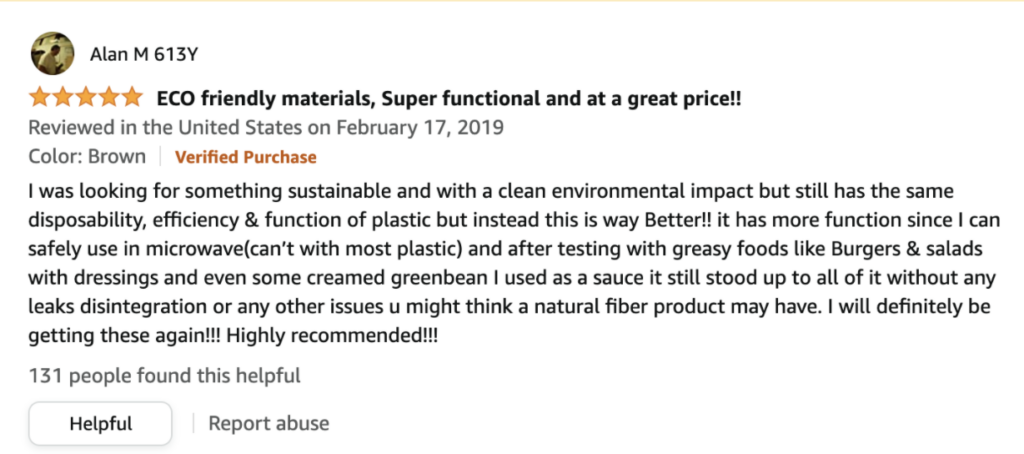
Here is another example of a customer who showed their appreciation and respect for this environmentally-friendly company that sells this eco water bottle.
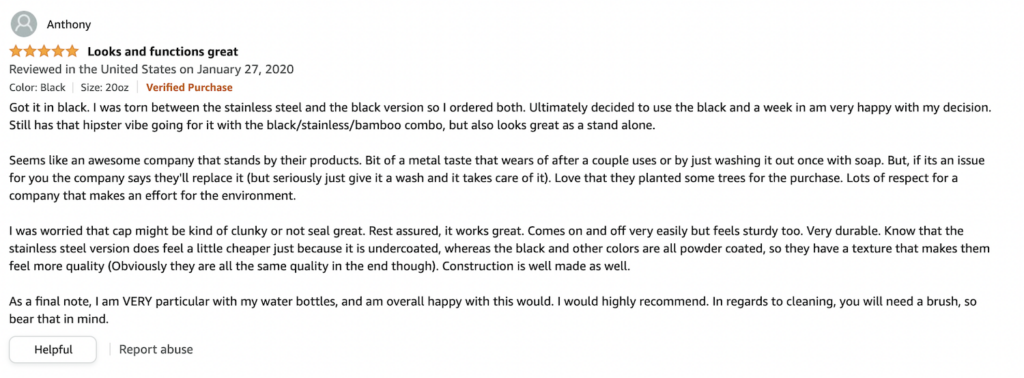
Support for political initiatives and popular causes
Inaction is the same as action. Not taking a stance on certain environmental and social issues may translate to consumers that you do not care. Nearly half of consumers are more inclined to purchase from a brand that takes a political stance on issues close to them (45%), and the majority are more likely to purchase from brands that support and act upon causes they have in common with the brand (53%).
For example, a number of companies such as Spotify, Pinterest, and Etsy took a stance for supporting democracy by providing employees with a paid day off on Election Day. T-mobile recently used a social media campaign to raise millions for hurricane relief.
How can I show my brand activism on Amazon?
If you are an Amazon seller or brand, you can display your brand’s participation in social activism to shoppers on Amazon, and potentially attract more customers than competitors who are not brand activists. Keep reading to learn about five ways you can do this!
1. Climate Pledge Friendly
Amazon’s new Climate Pledge Friendly program helps shoppers find sustainable products that meet third-party sustainability standards in the hopes of helping “preserve the natural world.” Shoppers can identify Climate Pledge Friendly products via a little badge displayed on the search page and the Product Detail Page.
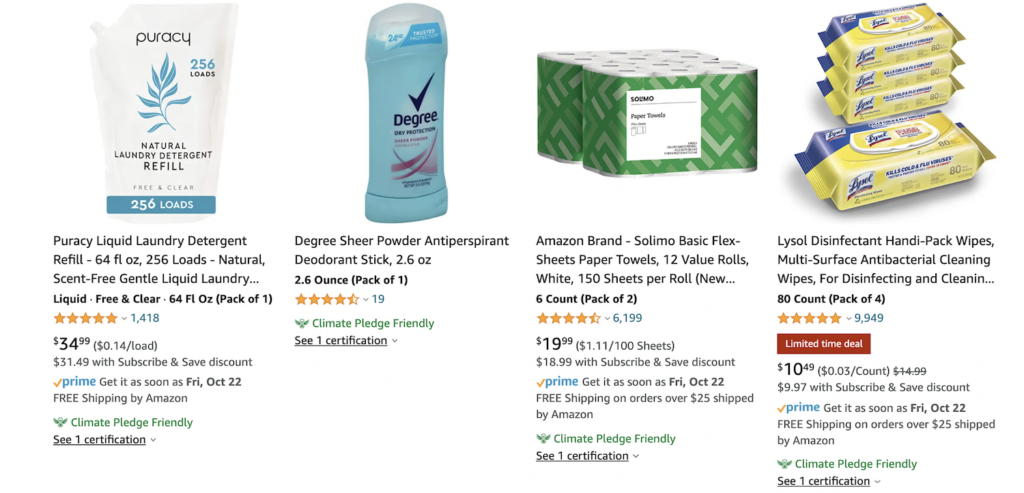
Shoppers can also search for products that have the Climate Pledge Friendly badge by selecting it as a search filter on Amazon. This feature makes it easier than ever for consumers to find brands that care about sustainability and the environment.
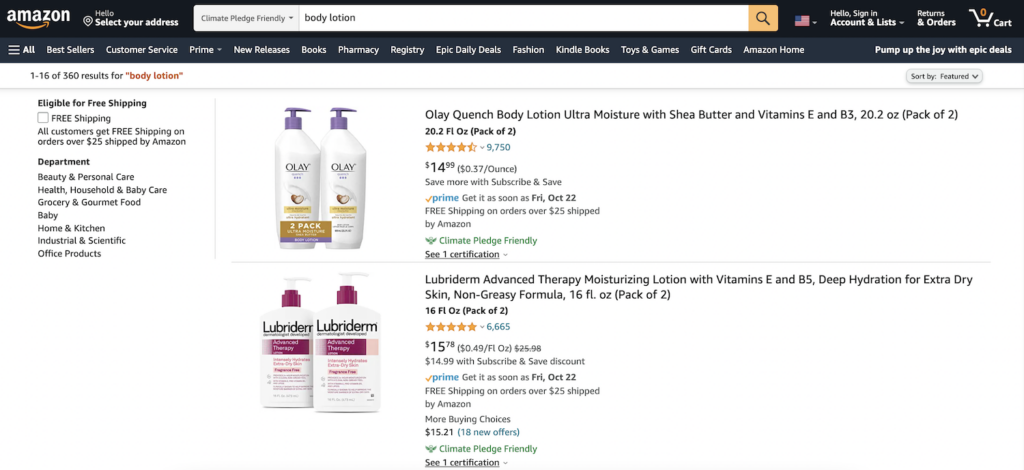
Check out our guide to Amazon and sustainability to learn how you can apply to be a Climate Pledge Friendly seller.
2. Black Business Accelerator
According to Amazon, the Black Business Accelerator program “is dedicated to helping build sustainable equity and growth for Black entrepreneurs by enabling their success as sellers.” The program offers financial resources, business mentorship, and promotional support to Black-owned Amazon businesses.
It also provides a way for Amazon shoppers to easily shop from Black-owned businesses. Shoppers can enter “black owned business” in the Amazon search bar and click on the top banner to put their ecommerce dollars toward closing the racial wealth gap.
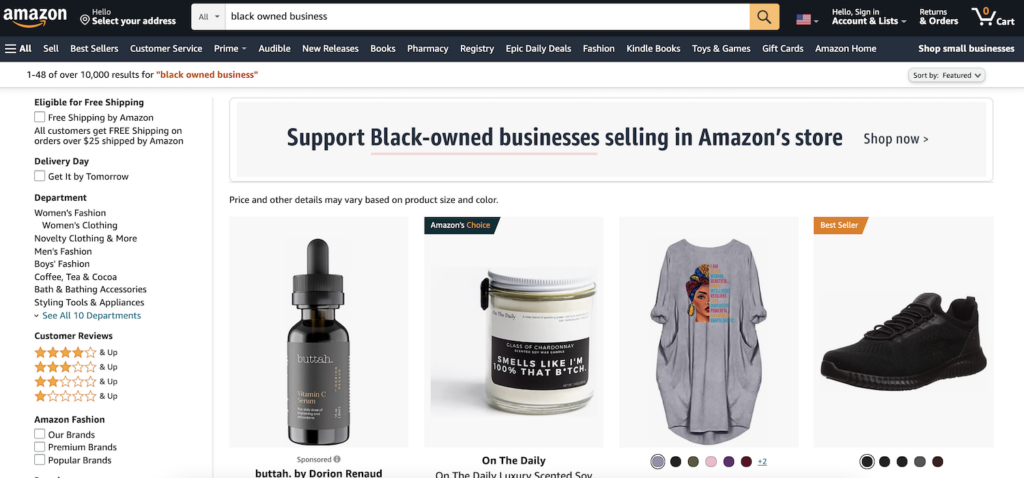
Qualified sellers can apply for this program here.
3. Brand Story
Amazon made it easier than ever for sellers to tell the story of their brand and let shoppers know what sets them apart with the A+ Content feature released last year called Brand Story. Only brand registered sellers can access this feature.
This section lives above the A+ Content on an Amazon Product Detail Page. Brands can answer prompts like, “How we got our start” “What makes our product unique?” and “Why we love what we do” This is the perfect place to highlight the important causes your brand champions.
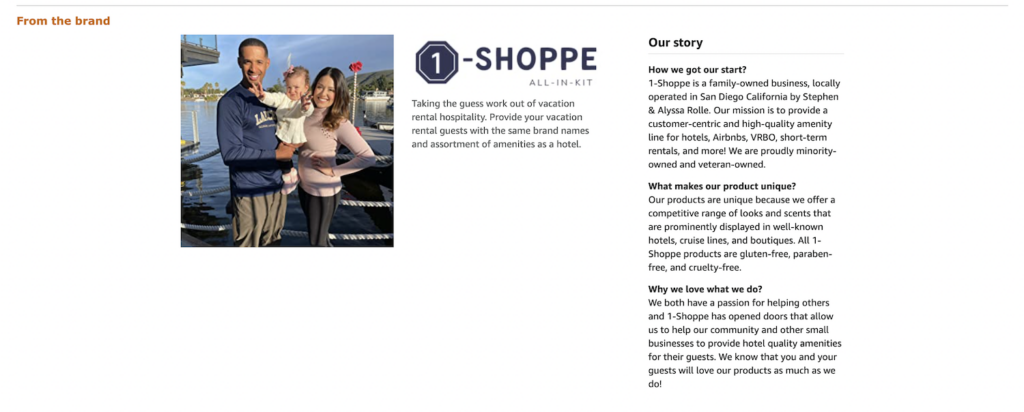
1-Shoppe uses their Brand Story to call out the ways their brand supports social initiatives:
- They are a family-owned business
- They are locally operated
- They are minority-owned
- They are veteran-owned
- Their products are cruelty-free
4. Your Amazon Store
If you are brand registered and have an Amazon storefront, you should use this real estate to show shoppers how your products are sustainable and how you get involved with charities or giving back to the community.
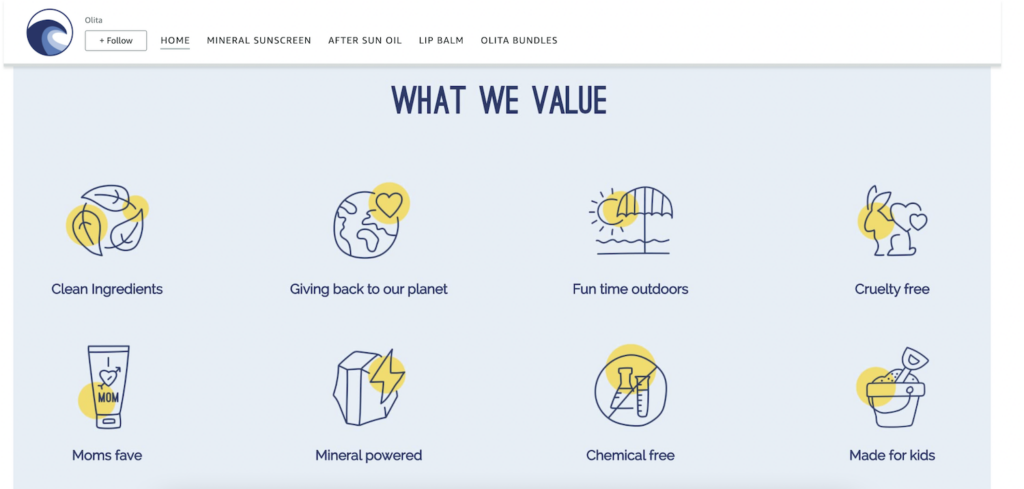
Olita uses their brand store to share their mission to give back to the planet and create cruelty-free products without harmful chemical ingredients.
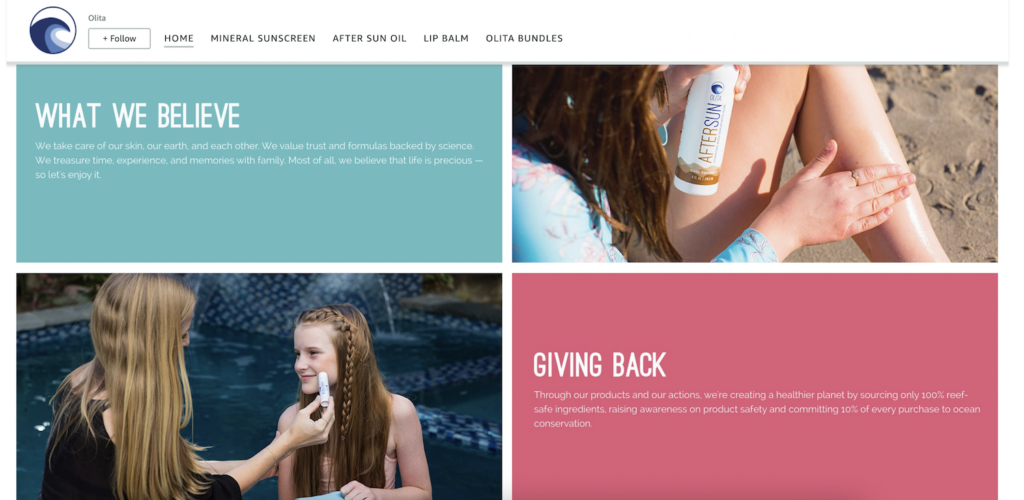
5. Listing Images
Your listing images can be used for more than just displaying the features and benefits of your products. You can also create infographics that let your customers know about issues and causes that are important to you.
Doggy Do Good created a secondary image on their listing that displays all of the charities they donate to, such as The ASPCA, The Humane Society of The United States, The Animal Welfare Institute and more.
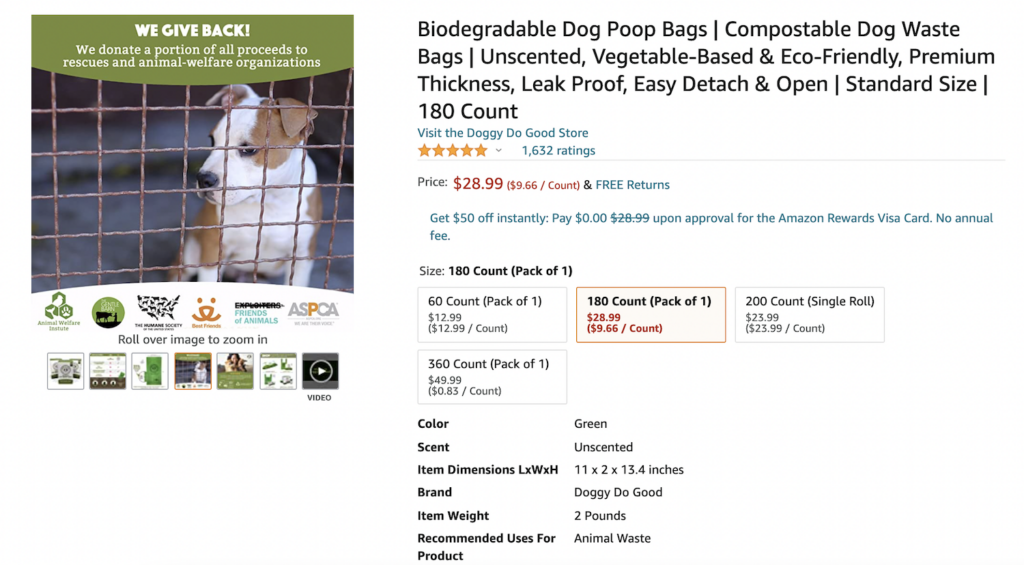
Tea Drops also uses a secondary image on their Amazon listings to show that they donate to the Thirst Project.
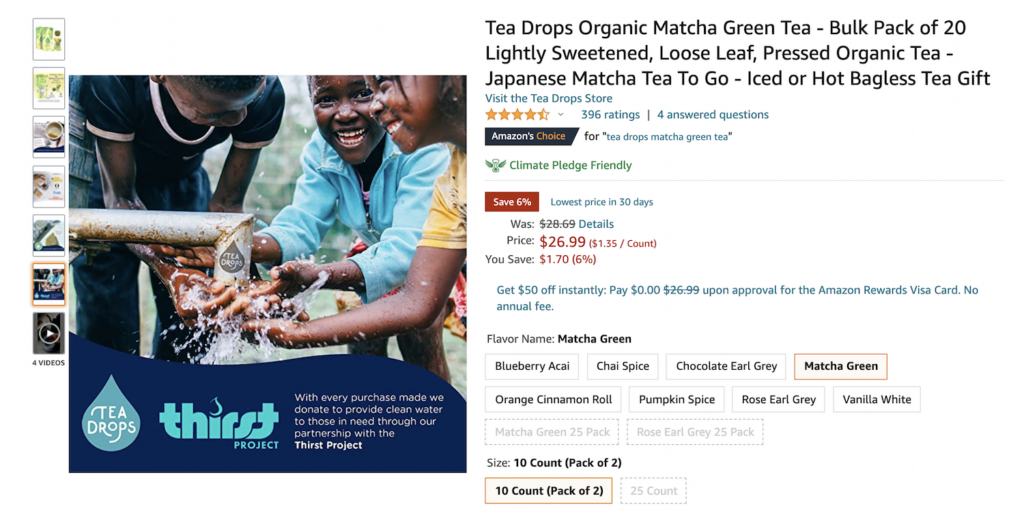
Clean Remedies created an infographic that tells shoppers important details about their product, such as its qualifications as USDA certified organic, non-GMO, cruelty-free, and made in the USA.
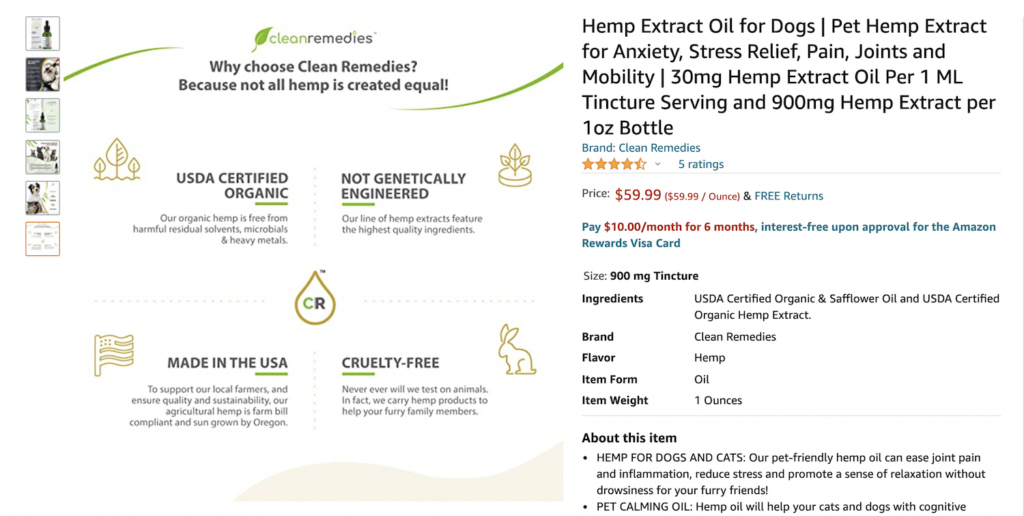
Start making an impact today
We continue to see brands on Amazon who are making an effort to address social issues like racial equality, climate change, and gender-neutrality, among many others. You can join these brands by sharing your brand story and showing how your brand participates in social change. Brand activism can help sellers connect with consumers and foster loyalty, and more importantly, make a true impact in our society!
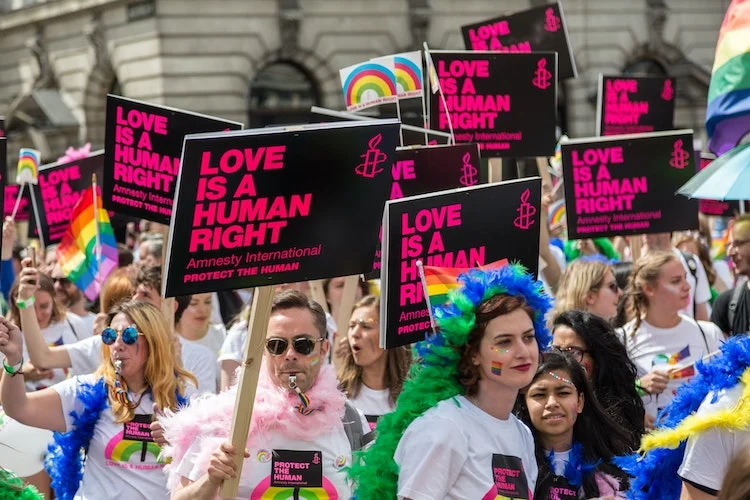
 1 Comment
1 Comment
One comment on “How Brand Activism Influences Consumer Decisions”